Keystone Plants and Songbirds
Keystone Plants and Songbirds
If you love songbirds, and are interested in supporting pollinators and other wildlife, you need to know about keystone plants. This is the term popularized by entomologist Dr. Doug Tallamy for plants that support the widest range of moth/butterfly larvae, and pollinators. Dr. Tallamy’s team at the University of Delaware have identified 14% of native plants that support 90% of butterfly and moth species. The larvae of those moths and butterflies are the prime food source that birds feed their young. It’s an important circle of life where plants, insects and birds are all connected.
Many of the plants that have sustained wildlife on Cape Cod have gotten little respect in the past, but fortunately that is changing. We hear from our customers that they are interested in supporting birds, butterflies and bees, and they are asking for native plants that assist in that effort.
While there are many lovely natives for Cape landscapes, those interested in helping the birds might want to start with some of the keystone plants. Some of these plants most homeowners already have on their property. Knowing the important roles these play can bring a renewed appreciation of those plants, and the resolve to protect them. Other natives can be added to landscapes as beds are created or maintained.
Trees to Plant and Protect
The two types of trees that support the most species of wildlife are oaks and wild cherries. In our area, the white oak (Quercus alba), black oak (Q. velutina), red oak (Q. rubra) and pin oak (Q. palustris) are the most important. A whopping 436 species of butterflies and moths depend on these oaks as host plants. A close runner up to the oaks is our native chokecherry (Prunus virginiana), which sustains 340 species of larvae. By protecting and planting these two types of trees, you are making a huge difference to the songbird populations.
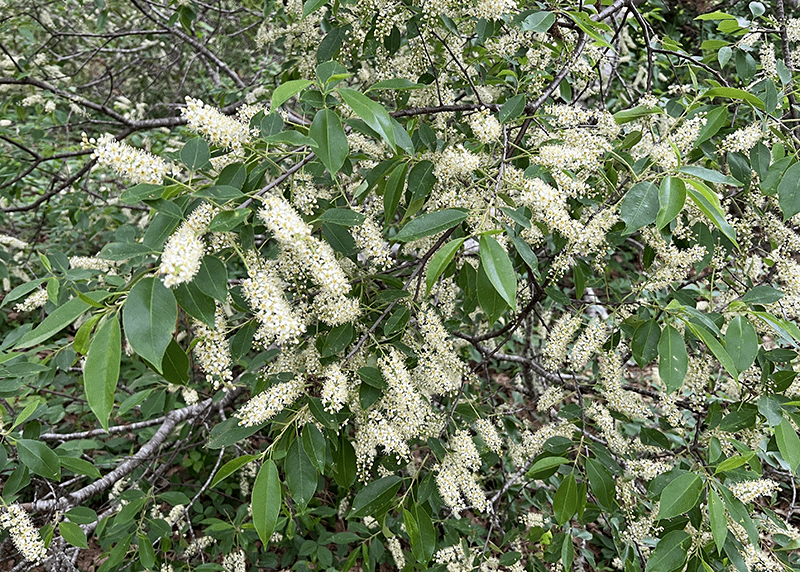
Other native trees that are important hosts for butterflies and moth larvae include the river birch (Betula nigra) that hosts 284, and pitch or white pines (Pinus rigida and strobus) that host 200.
Native Shrubs that Support Birds
While there are many native shrubs that are lovely additions to our yards and gardens, the two keystone plants are bayberry (Myrica pennsylvanica) and blueberry (Vaccinium corymbosum). The bayberry hosts 103 species of larvae, and the winter fruit on these plants feed many birds. Blueberries do triple duty in supporting wildlife by hosting 217 species of larvae, and 14 species of pollinators, while also producing valued fruit.
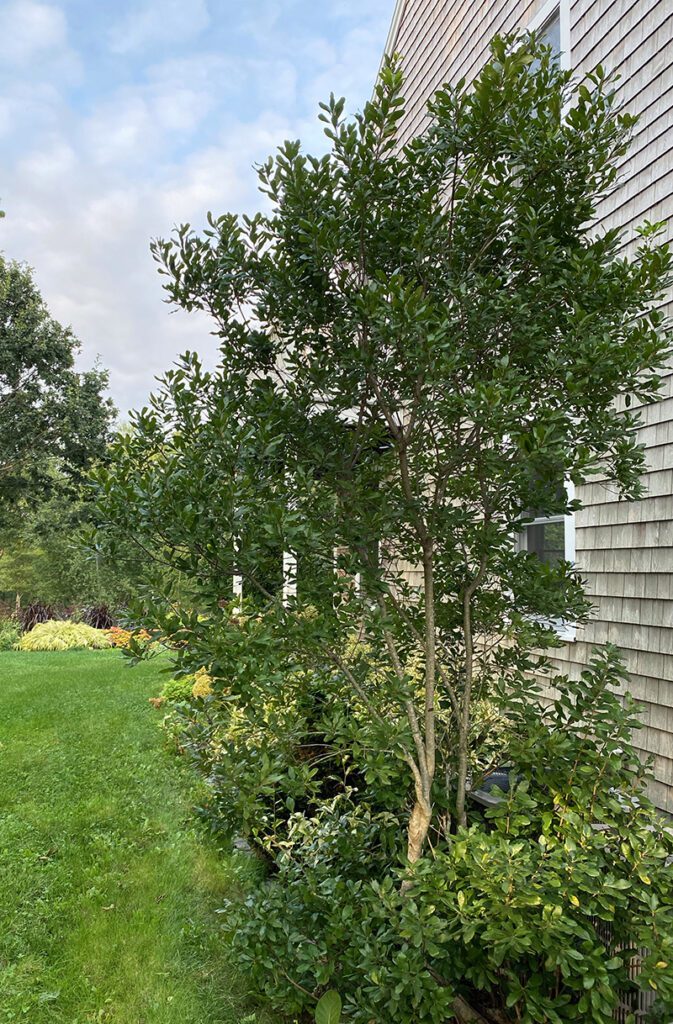
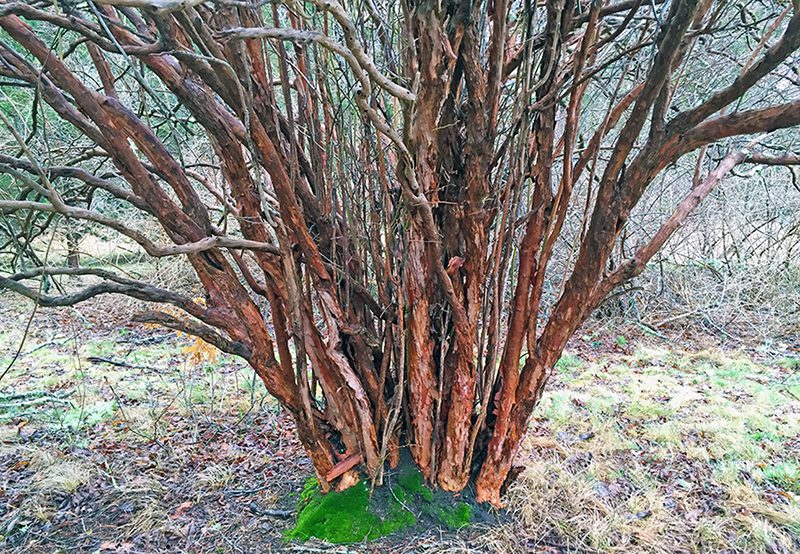
Five Keystone Native Perennials
Those who love flowers and appreciate perennial plants have several opportunities to grow important native plants. It’s interesting that the most vital of these, the goldenrod (Solidago species) is a plant that many have been misinformed about for years. Since the showy goldenrod flowers at the same time as ragweed (Ambrosia artemisifolia), many people blamed the Solidago for their allergies.
Goldenrod is lovely in a meadow planting, perennial bed or cutting garden. They thrive in full or part sun, and some are remarkably shade tolerant. Goldenrod hosts 104 species of larvae and 42 species of pollinators.
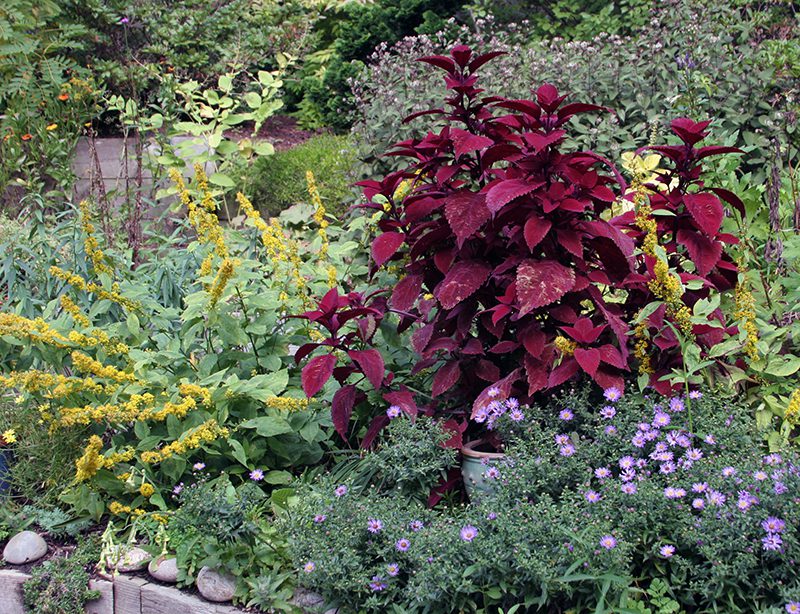
Several species of native asters (Symphyotrichum) are equally important for songbirds, since they host 100 species of larvae and 33 types of bees and other pollinators. In wild areas, asters and goldenrod often grow together, and the combination of these plants can also create a beautiful fall garden.
Other keystone flowers are perennial sunflowers, blackeyed Susans, and thread-leaf tickseed. Blackeyed Susans (Rudbeckia hirta and lancinlata) host 20 species of larvae and 29 different pollinators, while four species of perennial sunflowers (Helianthus divariatus, microcephalus, strumosus and decapetalus) support 66 larval species and 50 different pollinators.
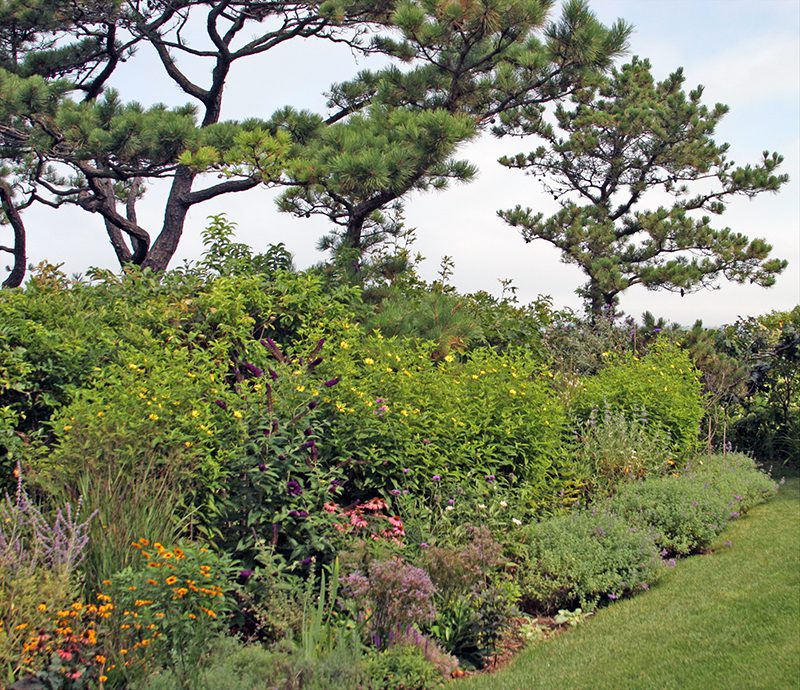
Thread-leaf tickseed (Coreopsis verticillata) is a fast-spreading perennial that thrives in full sun. Because it’s drought tolerant, and looks good before and after flowers, this native is perfect for planting on dry, sunny slopes. In addition to sustaining 22 types of pollinators, the seeds are eaten by birds.
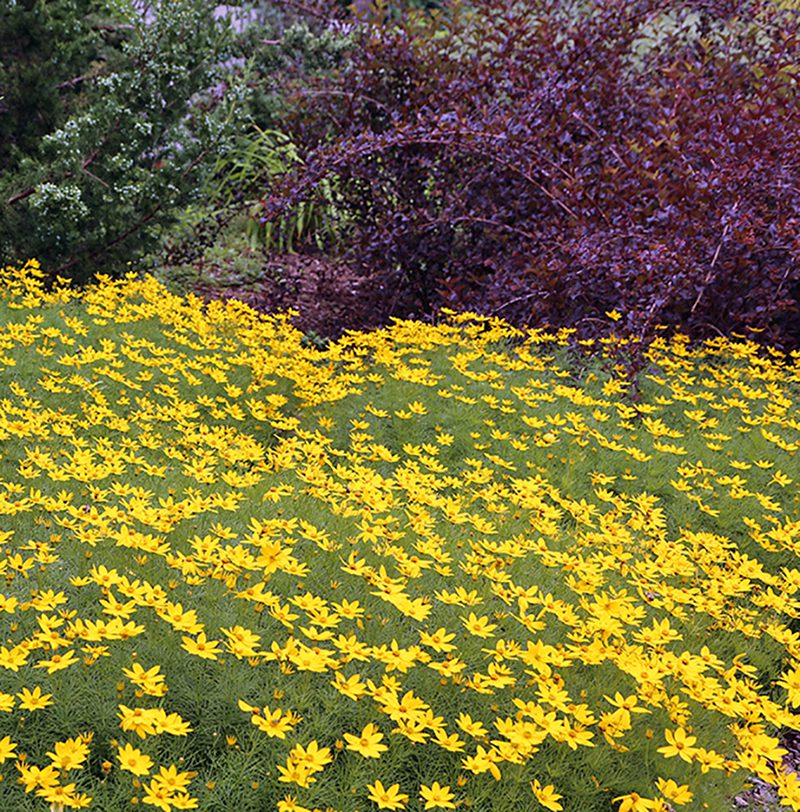
In a world where so much is out of our control, one thing we do have the power to accomplish is to make decisions in our yards and gardens that can make a difference to the wellness of our environment. By protecting and planting keystone plants in our yards and gardens, we can help make sure our grandchildren will enjoy the songbirds as much as we do.
If you want to download a list of other keystone plants that are native to Massachusetts, go to the Grow Native Mass website.
Subscribe To Our Newsletter
Sign up for our weekly email about sales and events.
